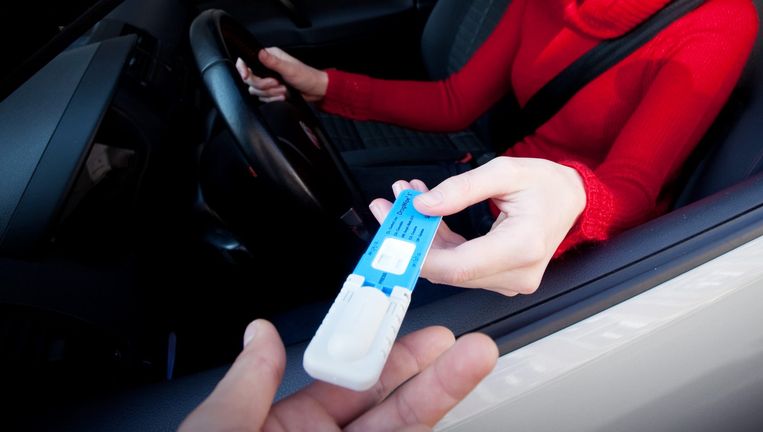An increasing number of young drivers are getting behind the wheel after using drugs, combining this with alcohol, or after inhaling laughing gas.
In two years, the percentage of young drivers aged 18 to 34 who admit to driving after taking drugs on a monthly basis increased from 11% to 19%, according to the findings of the tenth edition of the National Road Safety Survey, published by Vias, the Belgian Institute for Road Safety, on Tuesday.
The survey of 6,000 young drivers found that in two out of three cases (64%), young people who drive under the influence of drugs had also consumed alcohol.
"Each substance on its own will have an impact on driving performance (e.g. coordination, memory, reaction time, vision) and behaviour (e.g. emotion, risk-taking)," said Sarah Wille, toxicologist at the National Institute of Criminalistics and Criminology (NICC).
"Many studies show that combinations of drugs and/or alcohol increase the risk of an accident, often due to a failure to correctly assess the complex traffic situation," she added.
Related News
- 'Alcolocks' fitted in 1,038 Belgian vehicles
- Less alcohol, but more drugs behind the wheel, police campaign shows
- More than 1 in 4 Belgians use mobile phones whilst driving
According to a Canadian study, the risk of causing an accident with an alcohol level of 0.8% (about four drinks) combined with cannabis use is up to 80 times higher than for a sober driver.
In response to the findings, Federal Mobility Minister Georges Gilkinet emphasised the measures taken in the Federal Road Safety Plan to prevent driving under the influence of alcohol or drugs: "Together with my colleagues, the Ministers of Justice and Home Affairs, we will, first of all, improve the checks: one in three drivers will be checked every year."
Young and male issue
The problem is particularly acute among young male drivers. In Flanders, 21% admit to driving after using drugs every month, compared to 7% of women. In Wallonia, the number of young male drivers abusing drugs while driving rose from 15% to 30%. In Brussels, almost one in three young males do so.
Vias puts these increases down partly to the limited nightlife activities for young people who then became more tempted to use drugs at home, particularly cannabis, which remains in the body for some time after use and can have an impact on driving performance.
The most common drug drivers were caught after using was cannabis (67%), with one in four having consumed cocaine and almost one in five having used amphetamines. 22% of drivers who tested positive for drugs had combined drugs, according to NICC data.
Laughing gas
The findings showed that the use of laughing gas is on the rise – around two-thirds of young drivers combine drinking with nitrous oxide (laughing gas), which can have serious health consequences for those who inhale it.
"Immediately after inhalation one will experience a short euphoric feeling that can be accompanied by effects such as dizziness, loss of balance and blurred vision. This of course has an impact on driving performance," Wille explained.
Another big issue with laughing gas is that it cannot be detected by any test (unlike other illicit drugs). Vias is calling on the government to harmonise and tighten the legislation on the use of the chemical compound, as the possession and use of laughing gas are prohibited in several municipalities, but still allowed in others.
It added that Belgium should make concerted efforts to raise awareness among young people, to make it clear to them that this is not a harmless substance and that the health effects can be very serious.

